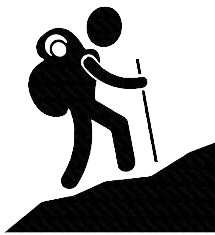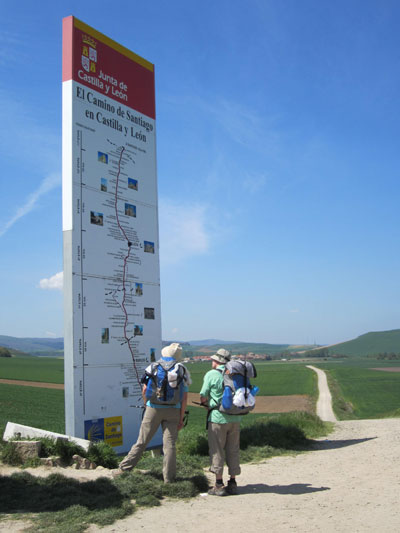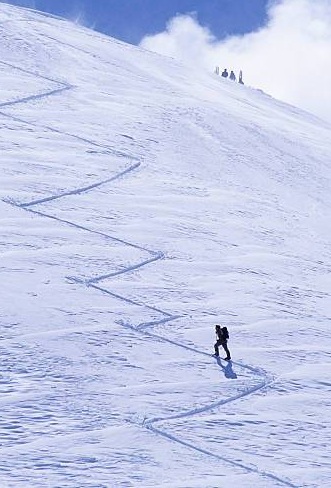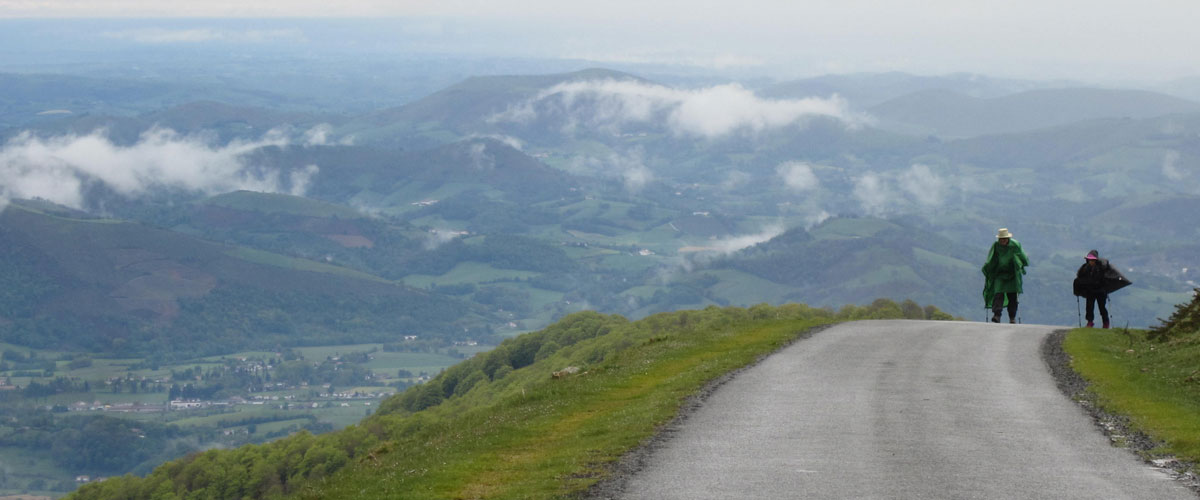Training for the Camino
Training for the Camino
Getting in Shape and Training for the Camino

Training for the Camino de Santiago is essential to build strength and leg muscles for daily hikes of 20 to 30 kilometers. This preparation typically spans several months, requiring dedication and a structured plan.
There’s no mandatory training regimen for the Camino, accommodating individuals of all fitness levels. The journey to Santiago de Compostela is about personal achievement, with each pilgrim progressing at their own pace.
Training specifics vary based on the Camino stage. For instance, crossing the Pyrenees demands more preparation than walking the Meseta. Pre-trip training reduces injury risks and enhances stability through strength exercises.
Footwear is crucial; lightweight hiking shoes or trainers are recommended for comfort and durability on the pilgrimage. Consult reputable footwear shops when selecting the correct footwear for your needs.
Begin training by gradually increasing walking distances, ideally starting three months before departure to optimize preparation for your Camino adventure.
Training for the Camino depends on how long and how far you plan to walk. Peregrinos (pilgrims) generally fall into three categories, each with different training needs:
Short Walk with Support

If you’re walking for 5–7 days with a tour company that moves your bags, then extensive training isn’t necessary.
Walking the minimum required for a Compostela

Walking 100 kilometres along any stretch of the officially recognized Caminos PLUS the final stage into Santiago de Compostela. Training is advised, especially if you choose a route with rugged terrain.
Walking a full camino route

Walking the Entire Camino: A longer route like the Camino Francés is much more enjoyable with a strong base level of fitness. While training for the Camino doesn’t need to be intense, consistent preparation makes a big difference.
The Camino isn’t an Ironman – the Camino is about steady progress, not pushing your limits. Training for the Camino should focus on a regular, gradual effort. Remember, many of us are no longer in our twenties, so pacing yourself is key. Build up slowly, and you’ll be better prepared to enjoy the journey.

Training For the Distance
Typical days of walking on the Camino de Santiago are 17 to 30 kilometers, which is 11 to 19 miles. This level of training will strengthen your muscles and toughen your feet. Training should be done wearing the same footwear, clothing, and pack you will be wearing when walking the Camino.
You will need to train for…
- Long-distance walking day after day. 17 to 30 kilometers (11 to 19 miles).
- Constant uphill and downhill on dirt paths and asphalt.
- Carrying a pack, traditionally with all of your gear or weighted with bags of sand or water bottles.
Even if you are an experienced walker, you need this specific training to prepare your body for the conditions on the Camino de Santiago. You may be able to start with longer mileage, but you need to gradually build up time wearing the same footwear, clothing and pack that you will be using on the Camino.
Steadily building up time will strengthen your muscles and toughen your feel. It will also reduce your risk of injury while on the Camino.
The hills, natural surface, and weather conditions require training. Don’t just go to Spain and “let the Camino train you”.

Camino Walking Tips:
- Switch backing: On very steep slopes or those with a loose surface, take a serpentine path by angling across the slope for a few steps left, then a few steps right. This switchbacking is a common trail walking practice to reduce steepness going up or downhill.
- Take Care on Loose Surfaces: Going downhill has a greater risk of slipping on loose gravel or loose dirt. Although you may want to speed through a downhill, you should take caution on natural and steep surfaces to prevent shin splints.
- Use Trekking Poles: Research confirms that trekking poles can help take some of the impact off of your knees as you go downhill, plus give you a little extra stability. You will have to adjust the length when you start the descent to make your poles longer.

Hill Training on the Camino
Most routes of the Camino have significant hills, both up and down, nearly every day. You need to include hills in your training not only to train your muscles but also to know how your footwear will perform.
Your foot will rub in different places in your shoes/boots going uphill, downhill and on flat ground.
All areas of your foot need to be toughened by training time on hills. This hill training will help prevent blisters on the Camino.
If there are no hills for you to train on, search out any incline such as parking garages, overpass and underpass ramps, stairs, or treadmills with incline. With a treadmill, increase the incline steadily until you are spending an hour using the maximum incline.
If you can use a treadmill that also has decline, that is as important to train going downhill. Stairs will also train your muscles, but won’t have the same effects on your feet/shoes as inclines do. Stairs could be used if you have no other hill training option.
Speed
Your Saturday and Sunday training days should be done at an easy pace. You will not need speed to walk the Camino. Walking at a brisk pace on the Tuesday and Thursday training days will help build your aerobic conditioning.
Train in Your Gear for the Camino
Do as much of your training as possible wearing the pack, clothing and shoes you will be wearing on the Camino.
Trekking Poles
Most Camino walkers use trekking poles. Use them on your training walks, especially for hills and on natural trails. Learn how to use them and carry them. You may not be able to take your poles with you on an airplane unless you check luggage. If you wish to avoid fees, it may be cheaper to buy poles when you arrive in Europe. You may train with different poles from the ones you buy.

Camino Training Plan
Week 1 – walk 3 days for between 45min and 60 min, Tue Fri and Sun
Week 2 – walk 3 days, 60 min, Tue, Fri, and Sun
Week 3 – walk 4 days for 60 min each Tue, Fri, Sat, and Sun.
Week 4 -Walk 3 days include up and down hills 120 minutes each day, Tue, Fri, and Sun
Week 5 – 4 days walking. Tue 120 min fast, Wed 120 min easy, Fri 120 moderate, Sun 2.5 hours including hills
Week 6 – Same as week 5 but with a light backpack, less than 4kg.
Week 7 – Same as week 5 with 120 min moderate on Wed.
Week 8 – 4 days walking. Tue moderate 3 hours, Thur fast 2 hours, Sat 3 hours including hills, Sun 3 hrs including hills. All days with light backpack, less than 4kg
Week 9 – 4 days walking. Tue and Thu easy 4 hours 12 kms total, Sat 4 hrs including hills aim for 4km hr 16 km total, Sun 3 hrs in hills 12km. All days with light backpack, less than 4kg
Week 10 – Tue easy 3 hours, Thu fast 3 hours, Sat 2.5 hrs in hills 12 km, Sunday 5 hrs include hills 20km with light backpack, less than 5kg.
Week 11- Tue easy 3 hours, Thu moderate 3 hours, Sat easy 3 hrs aim for 10km, Sun 5hrs with your backpack of about 5/6 kg – aim for 20km.
Week 12 – Take it easy, Tue fast 60 min, Thu moderate 2 hours, Sat 2hrs in hills, Sun 90 min easy in hills – all days with your backpack about 6 kg.
This program is designed for beginners to get to a point where the first few days on the Camino will not be a blur of pain. However, nothing can really prepare us for walking about 20+ km every day with a 6 to 8 kg backpack, (14 to 20 lbs). The first week is going to be tough, though it gets better very quickly – after about a week or so.
Once on the Camino de Santiago, there is one main point to remember DO NOT RUSH. Muscle strain is more likely when you are pushing your body by moving too fast, listen to your body, water it and feed it well, and take rests when required.
Please bear in mind that we are not doctors or fitness advisers.
Camino Bound © - All Rights Reserved - Site Map - Disclaimer
